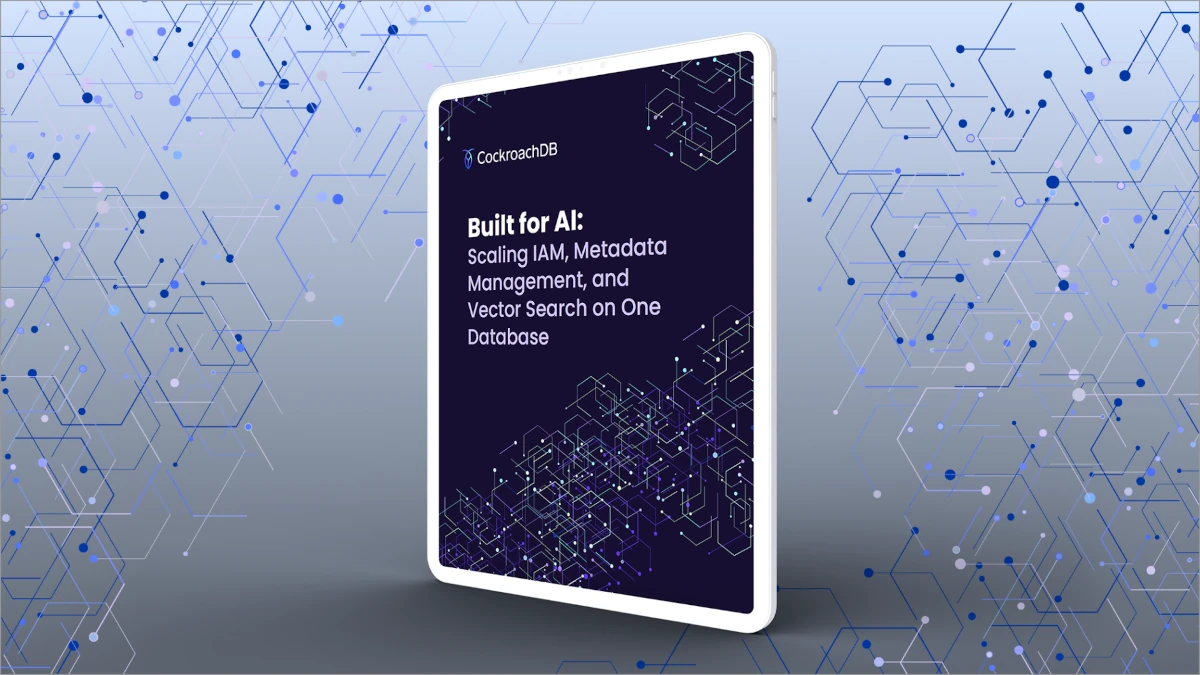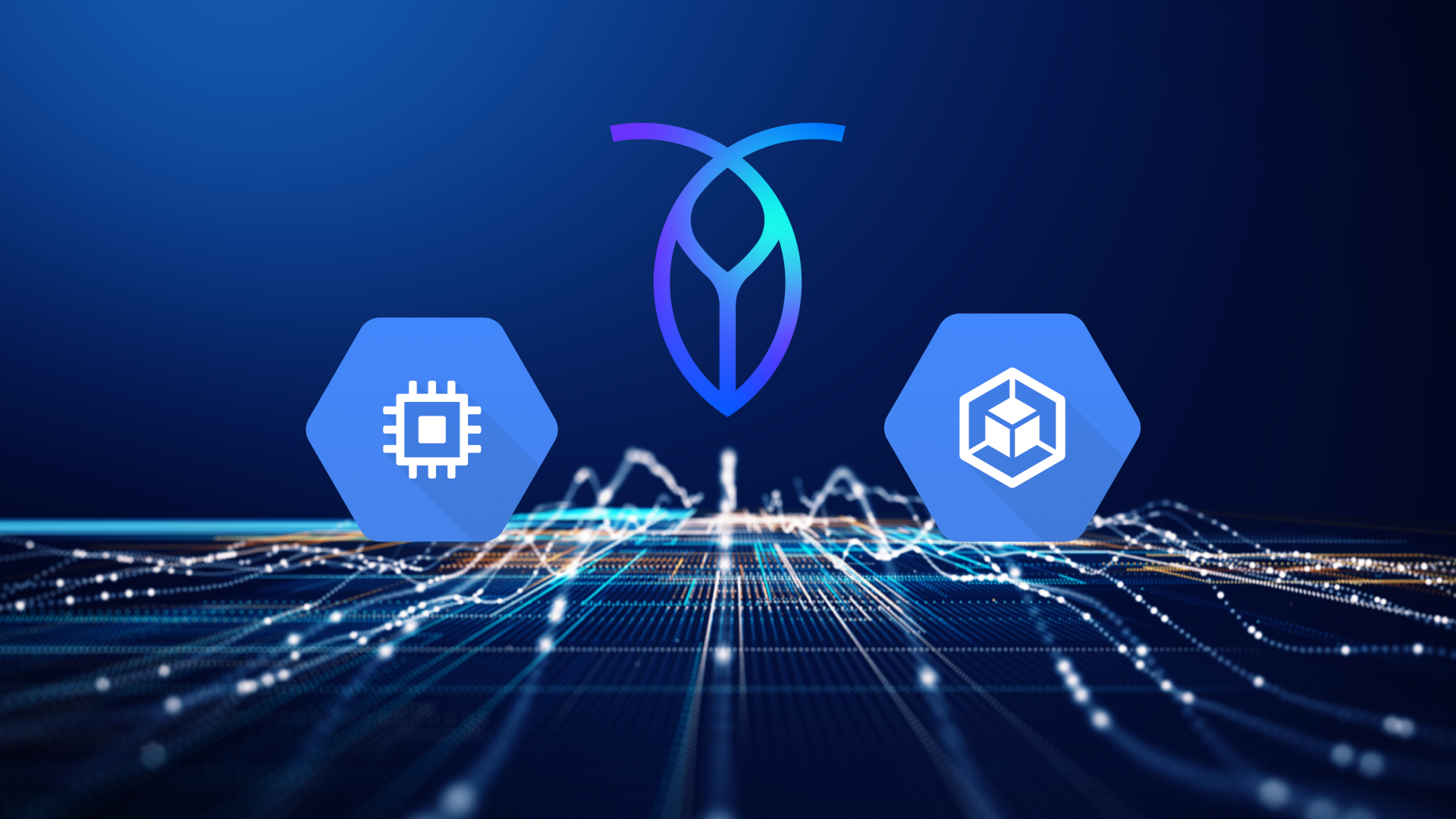Explore the new Cockroach Labs guide on scaling AI infrastructure – unifying IAM, metadata management, and vector search on a resilient distributed SQL database.
AI has moved far beyond the experimental phase. Now it's powering customer experiences, streamlining operations, and driving entirely new business models.
Moving from prototype to production requires more than better models, however – it demands a stronger foundation. That’s because once your AI services are handling millions of transactions daily, three challenges suddenly emerge:
traffic spikes become routine
applications must serve global users
regulatory compliance becomes non-negotiable.
If your infrastructure can't scale with demand, your AI strategy stalls.
That's why we created Built for AI: Scaling IAM, Metadata Management, and Vector Search on One Database. It’s a comprehensive guide, including customer stories, revealing the architectural choices that keep AI enterprises fast, resilient, and compliant at scale.
The AI infrastructure challenge
The AI landscape has focused heavily on LLM breakthroughs and vector search performance. But behind every production-ready AI application is a data layer that determines whether those capabilities work reliably – or crumble under load.
The reality? Most AI stacks fragment across separate systems:
IAM systems for authentication and access control
Transactional databases for application logic
Vector stores for similarity search
NoSQL databases for metadata management
Each individual system handles its role effectively. Cobbled together, however, they can create latency, operational complexity, and compliance blind spots.
This new Cockroach Labs guide examines how these silos create friction – and why unifying AI and operational workloads on a single distributed SQL platform like CockroachDB eliminates these barriers.
Three critical AI infrastructure tradeoffs
Data infrastructure choices directly influence AI performance and reliability. Working with teams building AI at scale, we've identified recurring architectural challenges. Built for AI explores these in depth, but here's the high-level breakdown:
IAM: scale vs. consistency
Securing billions of API calls weekly while delivering seamless experiences for global users creates competing demands: strong consistency and high availability. Traditional IAM systems force you to choose one at the expense of the other.
This guide explains how the pioneering AI provider OpenAI partnered with Ory, an open source identity provider, to deliver a highly resilient IAM system backed by CockroachDB.
Metadata management: Rich queries vs. scale
AI workloads generate massive metadata volumes – every object, version, and lifecycle event has to be tracked. You need complex queries with strong consistency, but most systems deliver both only through workarounds that introduce latency or downtime risk.
See how AI hyperscaler CoreWeave relies on CockroachDB to power its globally distributed AI Object Storage service, optimized for generative AI and machine learning workloads.
Vector search: Integration vs. performance
Many architectures isolate vector search from transactional data. This separation adds data complexity, latency, and operational overhead precisely when users expect real-time results – leading to infrastructure complexity that slows development and creates failure points.
CockroachDB is the fix, unifying traditional and vector data in a single distributed SQL platform. Learn how to launch and scale real-time AI applications without compromising consistency or performance.
Built for the real world
AI systems don't operate in pristine environments. They face network partitions, regional outages, traffic spikes, and growing data volumes – plus planned disruptions like software updates and schema changes.
Our core philosophy of Performance under Adversity counters the chaos. CockroachDB’s capabilities are proven through rigorous real-world testing of node failures, network partitions, regional outages, and more. AI workloads are increasingly mission-critical, making foundational resilience a must-have.
CockroachDB builds on this stress-tested performance with the distinct advantages of distributed SQL architecture:
Global, low-latency access to both AI and transactional data
Strong consistency for real-time accuracy
Geo-partitioning for compliance and performance optimization
Enterprise-grade resilience to survive outages, network partitions, and traffic spikes
These distributed SQL superpowers mean you can design for scale from Day One, and grow fast without redesigning your architecture.
Implementation benefits
From your core dev team to your customers, the guide explains the advantages of CockroachDB for AI enterprises:
Developer Impact: Familiar PostgreSQL → Faster feature development → Reduced operational complexity
Business Results: Improved application performance → Higher user satisfaction → Competitive advantage through reliable AI capabilities
Get the complete guide
This overview is just the start. Dive into the guide for architectural details and operational insights from real deployments.
Built for AI: Scaling IAM, Metadata Management, and Vector Search on One Database includes:
In-depth analysis of scaling challenges in AI infrastructure
How leading AI companies approach IAM, metadata management, and vector workloads at enterprise scale
Best practices for unifying operational and AI workloads without compromising development velocity
📥 Discover how to build AI infrastructure that's resilient, compliant, and ready to scale: Download the guide today.
David Weiss is Senior Technical Content Marketer for Cockroach Labs. In addition to data, his deep content portfolio includes cloud, SaaS, cybersecurity, and crypto/blockchain.






